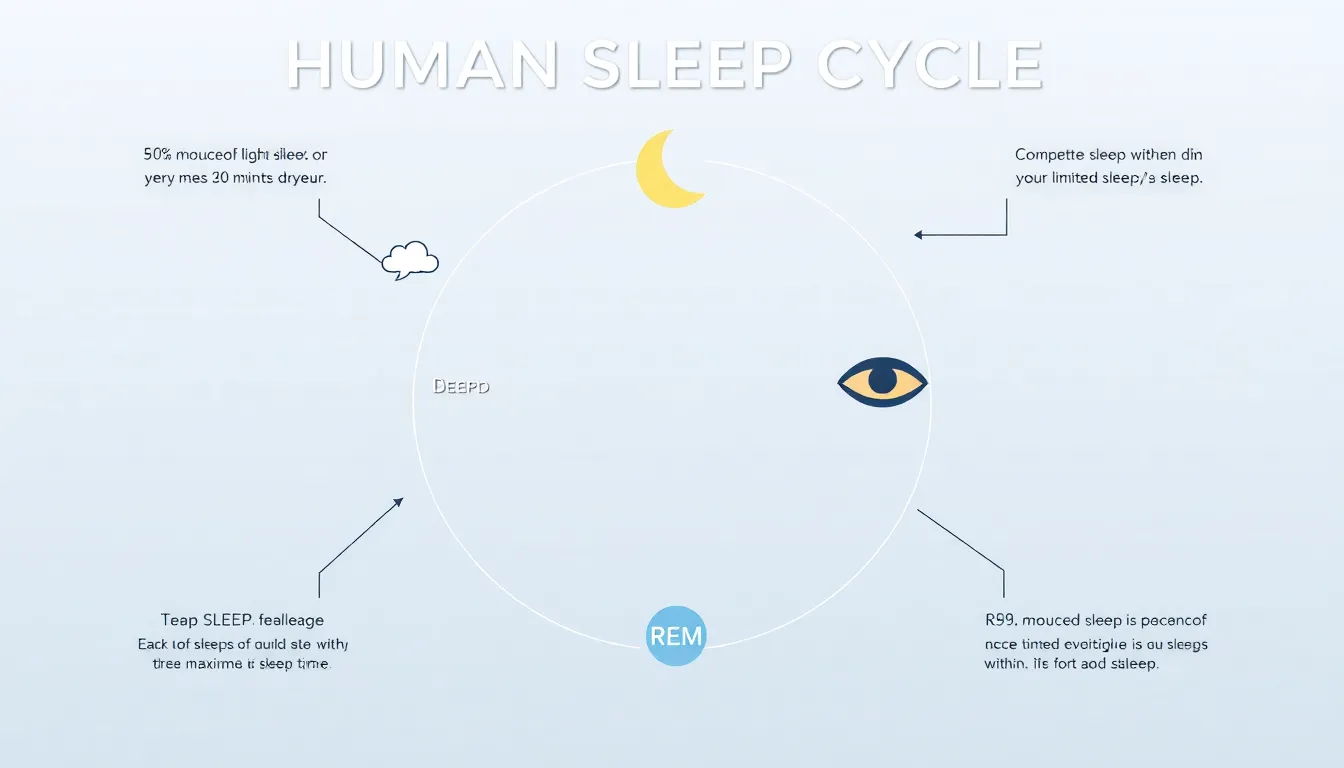We’ve all been there: you’ve got a packed schedule, a million tasks to juggle, and the clock is running out. The idea of condensing eight hours of sleep into just four might sound like magic or the plot twist of a sci-fi film. But what if it were possible, a cheeky little hack to play with the rules of shut-eye? Turns out, mastering our sleep cycles with savvy techniques can push the limits of our minds and bodies. So, how does one manage to squeeze in those elusive Zs without sacrificing sanity? Let’s immerse and explore this surreal world where nap dreams come true.
Table of Contents
ToggleUnderstanding Sleep Cycles

The Science Behind Sleep Duration
To unlock the secrets of cramming eight hours into four, it’s crucial to comprehend how sleep works. The human sleep cycle consists of various stages, each playing a unique role in maintaining health and well-being. A full cycle lasts about 90 minutes, traversing through light sleep, deep sleep, and REM (Rapid Eye Movement) sleep. Ever notice how you feel groggiest during the first few minutes after waking? That’s your brain struggling to shift from one stage back to alertness, highlighting how essential it is to reach those deeper states of sleep, even if time is short.
Stages of Sleep and Their Importance
Within a single night, people typically experience five full cycles, moving through light sleep (where the body begins to unwind) and deep sleep (where restoration occurs) before hitting the vital REM state (the realm of dreams.). Each stage is interconnected, creating a complex web that upon disruption can lead to fatigue and cognitive decline. Understanding these stages can help in collapsing your sleep needs into a smaller time frame. If your goal is to get efficient shut-eye, knowing when you’re in deep sleep or REM can guide your napping strategy, ensuring you wake feeling refreshed.
Techniques for Compacting Sleep
Napping Strategies
Now, let’s get practical. Many successful individuals swear by strategic napping. A short midday nap can boost productivity, enhance alertness, and balance mood, prompting many to explore this technique further. Short naps aim to rejuvenate the mind without stepping too deep into slumber, preventing that post-nap grogginess.
Power Naps vs. Long Naps
Power naps, typically lasting 10 to 20 minutes, provide just enough rest to recharge your brain without entering the deep sleep stage. Long naps, lasting around 90 minutes, allow the body to complete an entire cycle, enabling deeper rest without waking in the middle of REM, an optimal solution for those needing to catch up. To figure out which approach suits you best, think about your unique schedule and personal needs. Experimenting with both might just be the key to striking the perfect balance.
Creating Deep Sleep Conditions
Optimal Sleep Environment
Transforming your sleeping environment into a sanctuary is not just a luxury: it’s essential for deep sleep. Ensure that the room is dark, quiet, and properly ventilated. Using blackout curtains, earplugs, or a white noise machine can significantly enhance sleep quality. Keep electronics out of the bedroom as their screens can trick the brain into alertness, disrupting the very restful air you’re trying to create.
Sleep Hygiene Practices
Sleep hygiene encompasses routines and habits to maintain quality sleep. Aim for consistency, going to bed and waking up at the same time daily helps regulate your body clock. Also, consider integrating calming rituals before bed such as reading, meditating, or enjoying a soothing herbal tea. Establishing a routine can signal to your body that it’s time to wind down, easing the transition into slumber, regardless of your condensed hours.
Employing Sleep Aids Effectively
Natural Sleep Aids
Nature offers several sleep aids. Many individuals gravitate towards lavender oil, known for its calming properties, while others might find benefit from chamomile tea. Herbal supplements, like valerian root and melatonin, can also promote relaxation and help instigate sleep. Before trying any new supplement, it’s wise to consult a healthcare professional to ensure safety and efficacy aligned with personal health goals.
Cognitive Behavioral Techniques
Cognitive behavioral therapy for insomnia (CBT-I) is another powerful approach to getting better sleep in a shorter time. This method addresses negative thoughts and behaviors related to sleep. Practitioners often guide individuals through relaxation training, cognitive restructuring, and behavioral strategies designed to combat insomnia’s hold. When effectively executed, these techniques can condense your nightly rest into achievable pockets of quality sleep.
Monitoring and Adjusting Your Sleep Routine
Using Sleep Trackers and Apps
In our tech-savvy world, sleep trackers and apps have gained popularity. These tools can monitor sleep quality, providing insights into patterns and offering convenient ways to track progress. Some applications even suggest optimal napping schedules, helping individuals customize their sleep routines based on their day-to-day needs. Tracking your sleep can unveil aspects that may require adjustment, fostering better quality rest.
Assessing Sleep Quality Over Quantity
Eventually, it’s crucial to assess quality over quantity. A mere four hours of sleep might feel insufficient, but if those hours are rich in deep and REM sleep, they could be all you need. Pay attention to how you feel during the day, and adjust accordingly. Everyone’s sleep needs differ, and understanding one’s own body can help fine-tune how to balance those elusive eight hours into a more manageable four.



